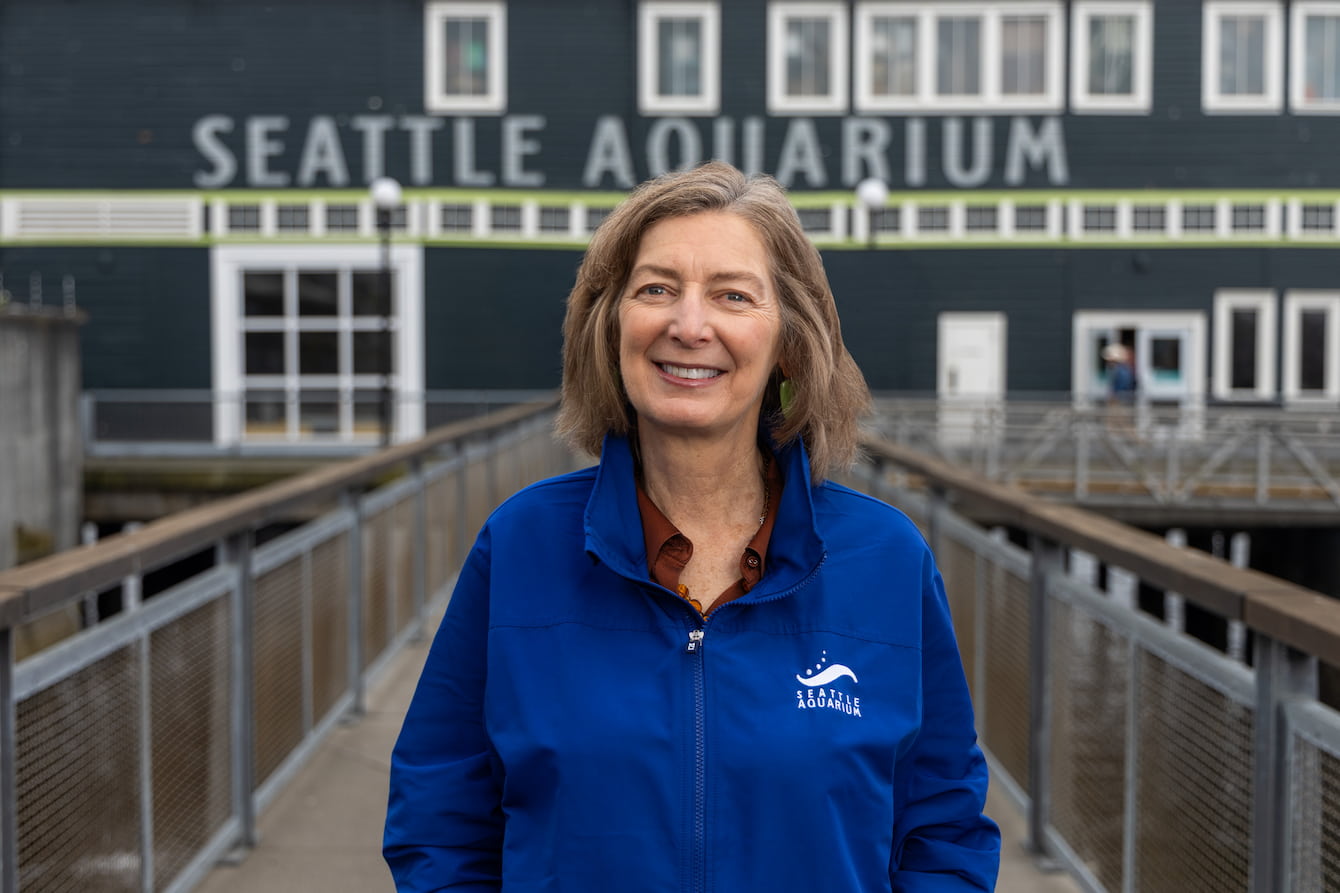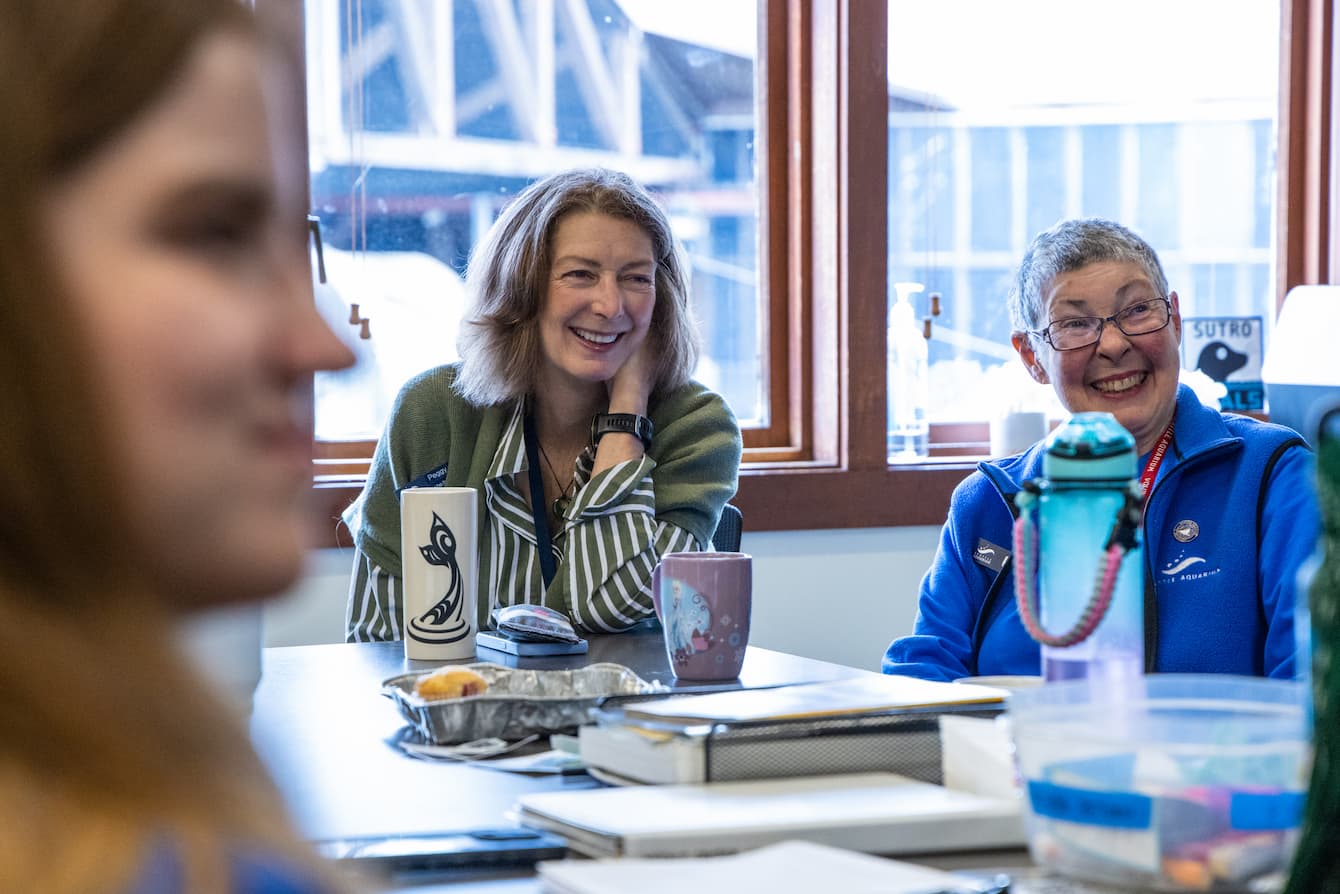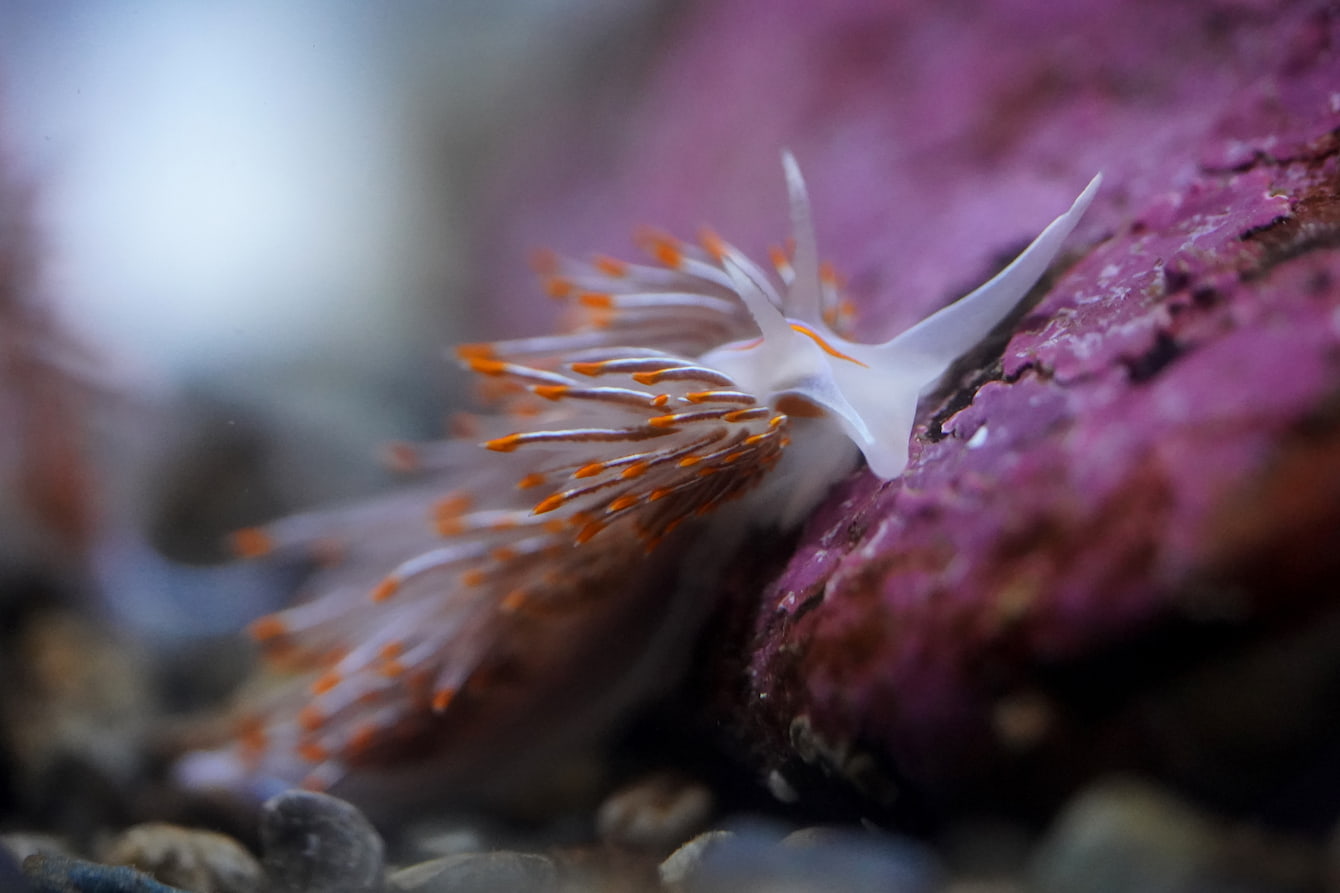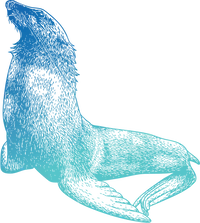Gift shop buyer. Baby bald eagle caretaker. Nature adventure leader. International sailboat crewmember. Chief animal operations officer. Education curator. President & CEO.
What do these roles have in common?
Peggy Sloan, who joined us as our new president & CEO in May, has held each of them—and others!—over the course of her storied career. She recently sat down to talk about the road that brought her here, what she’s learned along the way and her vision for the Seattle Aquarium and our conservation mission. (Missed the announcement about her arrival? Check out our press release.)

Seattle Aquarium President & CEO Peggy Sloan.
Q: What experiences did you have as a young person that created a sense of connection to the natural world and ocean?
A: I think my curiosity about nature and animals was innate. I grew up in an urban-suburban environment with pockets of wildlife—wherever there were animals and trees, I was out in it.
Q: Did you grow up thinking that you were going to do something with animals?
A: I had no idea except that I wanted to be happy. And what made me happy was being in nature and helping animals.
Q: What drew you to a career in marine conservation?
A: That’s a long story with a lot of twists and turns along the way! But where it started was pursuing environmental science in college, because that was the major with the most field courses and time outside.
I took classes in marine science. I was also working and had many different jobs, including one with an organization called Project U.S.E., where we brought urban youth into the outdoors for transformative experiences through nature and community.
My first job after graduation was like my little-kid dream: raising and releasing bald eagles for the endangered non-game species program in New Jersey. After my first season, they offered me a permanent job. At the same time, Project U.S.E. offered me a job leading a new coastal canoeing program. That’s the one I took. It was a very conscious choice that we have to work with people to protect nature.
After two years, I recognized that what I was doing was working for people in nature, not working for nature—and that I had a different calling. Because I didn’t need housing during my time with Project U.S.E., I’d been able to save some money. I took what I had, which was a bicycle and camping gear, and bought a ticket to New Zealand for a few months to see some of the world and figure out what was next.
On the last leg of the trip, I got stuck in a rainstorm and pulled over in a little port town where circumnavigating sailboats were looking for crew. I’d never sailed before but I’d always wanted to. I thought I’d extend my travel by a few weeks and instead sailed for the next 18 months, ending back in the U.S.
“That was what solidified marine conservation for me: How small the planet is. How much of it is covered by water. How vulnerable the ocean is, even though it seems so vast.”
At the end of it all, when I got back to the U.S., I knew I had to work for the ocean. But what that looked like, I didn’t yet know.

Working and living in the Pacific Northwest helped Peggy fall in love with our unique region. Photo: Susan Sommer (nee Beeman).
Q: What a story! What happened next?
A: I got a job here in Seattle working in the Bering Sea as a scientific observer for commercial fisheries. I fell in love with the Pacific Northwest and decided to pursue research and education for the ocean.
I thought, “I will run a boat, I will do research and education, and I will do it in the Pacific Northwest because I love it here.”
I had a job lined up to operate a boat for three months in the Florida Keys and went there to get my captain’s license. I got it—and in the process found a calling where it wasn’t required. I started working in a marina and, on my days off, volunteered at a place called the Dolphin Research Center (DRC).
“And that's where the switch turned on. I saw the intersection between what I wanted people to care about and what they did care about. They came through the door just wanting to see dolphins and were absolutely transformed in their receptivity to connecting with and caring about nature.”
Q: And we’re only in 1993! What happened over the next 30+ years?
A: I took the first job available at DRC, which was the gift shop buyer, and ended up leaving as director of education. A lot happened in the interim! But throughout my time there, I recognized what I really wanted to know about was, “How are we activating people in the conservation space?”
After eight years with DRC, I started graduate school and took a job as the education curator at Brevard Zoo in Florida. This position introduced me to the broader community of the Association of Zoos and Aquariums (AZA) and the possibility to amplify conservation impact through broad collaboration. However, after two years, I knew my focus needed to be marine. I had the opportunity to go to North Carolina Aquarium at Fort Fisher as their education curator, which I did for seven years and then became the aquarium director for another nine. I also finished my graduate degree in marine biology at UNC-Wilmington.
In 2018, I welcomed the opportunity to join the John G. Shedd Aquarium in Chicago during a time of major transformation. I wanted to understand how to reach people in urban settings—where most humans live—and Shedd created an ambitious plan to do so.
I’d probably still be there if it weren’t for the opportunity here. As much as I loved the work and will always love the Shedd Aquarium, I missed the ocean.
Q: What drew you to the president & CEO role at the Seattle Aquarium?
A: The sense of place, the potential for impact, the ethos and the talent.
Throughout my career, once I became connected with the AZA community, the Seattle Aquarium was very much in my sphere of work partners. This aquarium has always punched above its class—the culture and community here are really effective and innovative. And when I’m in conversation with the board, it’s clear that the most important thing to them is delivering on the conservation mission. We also have two new buildings, the off-site Animal Care Center and the Ocean Pavilion—and a whole new waterfront of opportunity.

Peggy meeting with a group of Seattle Aquarium volunteers.
Q: What initiatives would you like to move forward during your time here?
A: I want us to be operationally stable, meaning that people want to work here, and stay, because we are effectively delivering on our mission and they’re excited about what’s next: deepening our impact. I want us to lean in to what we’re good at and combine our strengths in such a way that we are moving the needle on marine conservation with a highly engaged, talented and valued team.
Q: What does deepening impact look like to you?
A: Deepening impact means that the changes we’re working to achieve come to fruition: more critical marine areas are protected, effectively—creating nature solutions to global environmental threats, like warming seas, while simultaneously leading to more species recovery—because more people, all people, value nature—because we need it to live on a habitable planet.
Q: Last big question: Why are aquariums important?
A: The Seattle Aquarium is a conservation organization and we’re preaching to the congregation more than the choir. For example, The Nature Conservancy, World Wildlife Fund, Conservation International and other great and well-established conservation organizations would love to have our platform. The people that are engaged with those organizations—who are doing tremendous work—are already in the choir. They’ve joined up because they already value nature.
Our audiences are not necessarily there. We have this incredible opportunity to reach people where they are. That’s why we call aquariums free-choice learning environments, right? People may choose to come here because their kids want to see sharks or otters or an octopus. Or they may simply want something to do on a rainy day. And that gives us a chance to reach them.
Aquariums are one of most accessible and best ways that we have of introducing people and getting them connected to the ocean in a meaningful way. That’s why some of the most important roles in the Aquarium are probably the front-line greeters who encourage people to go to the touch pools or the harbor seal habitat—“You’ve gotta see XYZ!” They feel important, seen and heard. They have fun, and want to come back and want their friends to come too. And they want sea otters to be happy for the rest of their lives.
Q: Last question for real: What’s your favorite invertebrate and why?
A: That’s one I can’t answer because it’s whichever one is in front of me—the one that I’m getting to see and experience. I saw two opalescent nudibranchs in the touch pools this morning. The fact that they just come in with the water from Elliott Bay, just below our pier—it’s absolutely magic and our guests think so too. From moments like that, it’s a quick jump to, “Oh my gosh, we have to save the ocean.”

Can you spot an opalescent nudibranch on your next visit to the Aquarium?
Ready to learn more about what you can do to help protect the one world ocean we all depend on? Visit our Act for the Ocean webpage and plan your next visit to the Seattle Aquarium! You might even spot Peggy admiring the nudibranchs at the touch pools.
